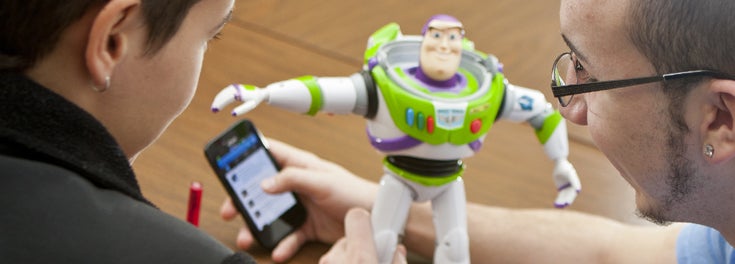
Social media is a way of life for college students—especially for the freshmen in Professor Angela Slitt’s “Toxic or Not?” course. Students in the class not only discover the toxins that lurk among us, they also have to spread the word —on Twitter— about what they learn.
Associate Professor of Pharmacy Angela Slitt, a toxicologist by training, created the popular “Toxic or Not?” class as a Grand Challenge course, one of a number of general education courses designed to explore some of the significant challenges of 21st century life. Students in the class look at their everyday exposure to potentially toxic substances, examining a variety of products—from children’s toys to the common household and personal care products most of us take for granted.
Beyond the science of the course, Professor Slitt also wants her students to learn how to navigate the maze of “so-called facts” about environmental toxins and health, and to leave the course better able to see through myths perpetuated in the media.
The students learn about a variety of environmental challenges, and they learn how to use the Internet to obtain credible information. The whole point is to get them to think in an evidence-based way.
That’s where Twitter comes in. Students—who are divided into teams with ominous-sounding names such as Team Arsenic, Team Lead, and Team Ricin—are responsible for creating substantive tweets from @Toxic_URI about what they learn in class. And with an increased awareness of the importance of sending out good information, they become very careful about the accuracy of their tweets.
“Twitter gives the students a forum,” said Professor Slitt. “It’s a great opportunity for them to not just connect with each other but with the larger community. As we learn, we can share.” It’s also fun. “This class allows us to learn about new topics, do research on them and then put out helpful Tweets,” said communications major Kyle McMail.
The goal is for the class is to accumulate 500 real followers—the more high profile followers the better. Students reach out to University and government officials and to the community of professionals in the fields they are studying.
Students who’ve completed Professor Slitt’s course say the “Toxic or Not?” class has had practical and long-lasting impacts on them – not only in terms of the science, but also on the way they consume media of all kinds. “I learned to be more careful about where I obtain my information online,” said accounting major Anthony Markey. “Not all sources are credible.” Communications major Jessica Sharerow agrees. “I definitely have become a more careful consumer of electronic media.”
Students in the class also benefit from looking at the both the global and socioeconomic impact of toxins in the environment. “Our poorest have the highest body burden of harmful chemicals. We talk about why we should be concerned about lead poisoning and what effect it has on learning and development in children,” Professor Slitt said, noting that studies have shown blood-lead levels as the strongest predictor of disciplinary problems in school kids and the third-strongest predictor of juvenile crime, revealing that lead exposure early in life can influence behavior later in life.
“The students learn about a variety of environmental challenges, and they learn how to use the Internet to obtain credible information. The whole point is to get them to think in an evidence-based way.”
Interested in learning more? Follow Professor Slitt on Twitter.
.
